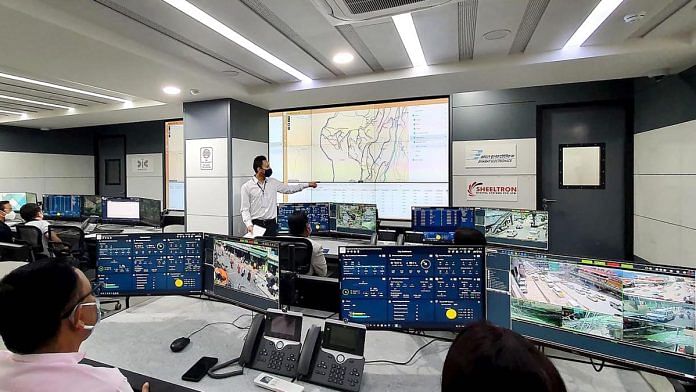
Thank you dear subscribers, we are overwhelmed with your response.
Your Turn is a unique section from ThePrint featuring points of view from its subscribers. If you are a subscriber, have a point of view, please send it to us. If not, do subscribe here: https://theprint.in/subscribe/
Smart City Mission was a very ambitious program launched by the central government to develop 100 identified cities into a modern infrastructure setup that improves the quality of life and ensures sustainability. Looking into the rapidly increasing urbanization of our country, this was a much needed initiative. However, its implementation missed on several fronts that hindered vision translating into reality.
Policy Directives: ‘Mission Statement & Guideline’ issued by the Ministry of Urban Development (June 2015) states, “The focus is on sustainable and inclusive development and the idea is to look at the compact areas, create a replicable model which will act like a lighthouse to other aspiring cities.” It was evident that the government wished to create ‘models’ that could further be replicated at smaller locations and trigger a chain of sustainable urban settlement in the country. This purpose was thoroughly missed when the program started rolling out in one city after another. Let us take a look at the macro-issues in ground reality perspective.
Creation of SPVs & Capacity Building: For each smart city a Special Purpose Vehicle (SPV) was to be created that was to be headed by full time CEO. The objective was to make these SPVs self-sustainable which could evolve its own credit worthiness for raising additional resources from the market. Policy clearly emphasized that the government’s contribution to Smart City is to be used only to create infrastructure that has public benefit outcome. There was even the provision of private sector and financial institutions taking stakes in the SPVs, within certain prescribed guidelines.
Through various measures, in phases and tranches, government released funds to the tune of Rs. 1000 crores to each smart city, amounting to approx. Rs. One Lakh Crores in totality. This is a huge sum quite sufficient to create self-sustaining institutions. Over the period of time, we did not witness any noticeable participation of private financial institution in any smart city. The SPVs could not attract the funds from any other sources because there was no visible stream of revenue generation from smart city programs. Instead of investment, it turned into expenditure. Now the question arises as to why it happened with a program which was launched with so much of fanfare and which had such singular attention of both the central and state governments?
Structural Problems & Issue of Sustainability: Point was missed from the inception itself, which is constitution SPVs. For heading the SPVs, the idea was to bring urban experts from around the globe who have past credentials in developing such smart cities. They were supposed to replicate proven models, taking into consideration the local conditions. In this way a pool of experts could be created who could further proliferate this programs to other locations in the country. For the success of such large scale programs, capacity building exercise is absolutely indispensable. This way a set of government officials, local bodies, consultants and implementing agencies could get trained.
Instead what happened is that these SPVs were headed by the IAS officers who had scant exposure in urban development, let alone in creating smart cities. As a result, no smart city could be developed in wholesome manner. Only on scattered manner few projects were undertaken covering general public amenities like water supply, roads, parks, public buildings etc. After nearly a decade of program launch, we hardly have any robust model for replication. The projects that were initiated will forever keep looking for the government aids for maintenance and expansions.
These Smart City SPVs could not create any asset as such that could ensure revenue generation in future and bring sustainability of these cities. After the allocated government funds are exhausted, these institutions will face the challenge of meeting demands of emerging needs of city. Either the government keeps infusing additional funds, or these SPVs go defunct in due course of time. At multiple locations, the various completed projects components have already started deteriorating or becoming dysfunctional due to lack of fund and attention. We don’t have a single location which can be properly called a ‘smart city’ irrespective of whichever definition you chose to have.
The Way Ahead: The scale of Smart City program was so grand that it will offer many useful learning for future, if examined and analyzed objectively. First of all, we need domain knowledge experts to spearhead such initiatives, both at the administrative and technical levels. This should be followed right from the constitution of committees and SPVs. Then we must have a model to replicate, or such models should first be created before scale-up. The learning from one location must be transferred to other in order to reduce the cost of experimentation. Throughout the process, capacity building exercise should be an integral part that will give us a talent-pool that could be put on mission of training further set of people (administrators and technocrats). And most important of all, ‘revenue generating’ steams should be distinctly visible at overall program levels. If the cities are not self-sustainable, all the efforts and resources will ultimately go in vain, as it appears to be happening in the case of Smart Cities.
These pieces are being published as they have been received – they have not been edited/fact-checked by ThePrint.

COMMENTS